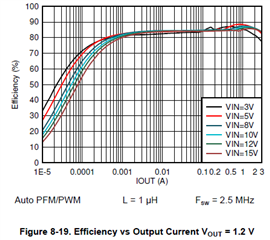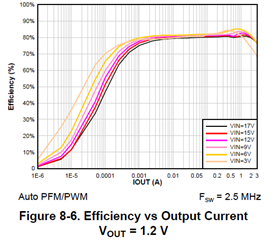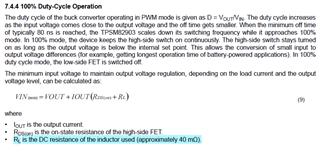Other Parts Discussed in Thread: TPS62903,
Tool/software:
Hi support team,
The conversion efficiency is lower than that of the TPS62903.
TPS62903: 84%

TPSM82903: 77%

Why does the efficiency decrease when an inductor is built in?
Conditions:
VIN = 12V
VOUT = 1.2V
IOUT = 3A
MODE = Auto PFM/PWM
L = 1μH
FSW = 2.5MHz
Regards,
Dice-K


